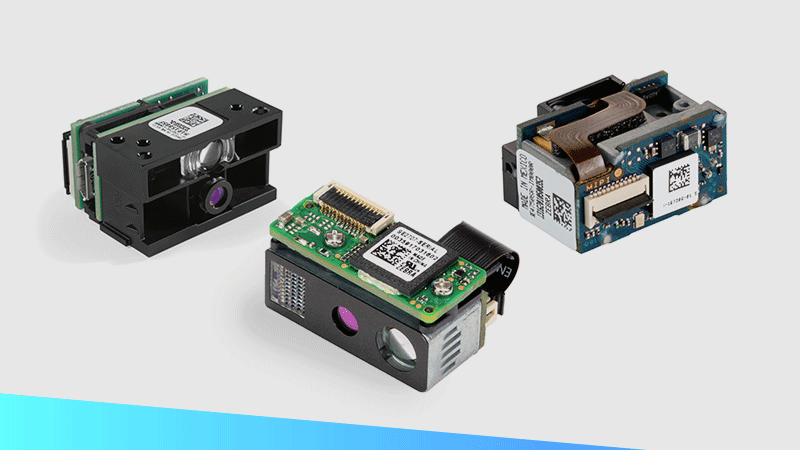
Have Plans to Develop a New Point-of-Sale (POS) Technology Solution? Read This.
There are certain things we do without giving them a second thought. For instance, brushing our teeth. Starting the car in the morning. Turning on a light. These are all daily tasks that we complete as if we’re on auto-pilot.
A similar level of often-mindless activity often happens when customers go shopping. There’s an expectation of events that have been engrained within their consciousness thanks to decades of consistency in how the retail experience has been delivered, as well as the development of personal routines. Customers may know exactly what they’re going to buy, or they may be there to browse. Either way, once they head to the register, they know the associate will scan their items, provide a sales total, and that they will be required to turn over cash, a check or a credit card and wait for change (if applicable) and a receipt. Auto-pilot.
However, recent technology advancements and a shift in consumer demand for more control over their shopping experiences have led many retailers to turn off customers’ auto-pilot function, at least at the register. But if retailers aren’t careful, they will lose customers to unforeseen turbulence. It’s up to the developers, designers and engineers of point-of-sale (POS) and mobile POS solutions to ensure smooth transactions at every point of the customers’ journey to ensure success for their customers and strengthen loyalty.
Is it Possible to Successfully Design a POS Solution that Accommodates Consumers’ Cross-Channel Self-Control Expectations in Today’s Omnichannel “Now Economy”?
Retail and grocery customers want to be able to order online and pick up in store, use digital coupons, pay with mobile wallets, have their receipts emailed to them and more – in a very personalized, frictionless manner, nonetheless. The good news is that all of these actions are powered by, and in most cases require, a barcode. The bad news is that modernizing a POS solution is not as simple as integrating a barcode scanner into your legacy technology architecture.
It would be easy in the rush for innovation and function to look to save on development and execution costs by trying to build a POS solution from scratch with a camera or cheap scan engine.
Consider this, though. A cheap scan engine likely does not come with support, and it certainly does not come with a warranty. What happens when it arrives and doesn’t work? Or it can’t read damaged, torn, curved or poorly-printed barcodes? Fixing these issues adds to your development and testing time, inevitably driving up expenses and lengthening time to market. It also disrupts customers’ shopping experiences if retailers using your POS solution have already deployed the technology and have to take it offline to troubleshoot, repair or rebuild. No retailer can afford to disappoint customers for any reason given the plethora of other digital and physical store options that consumers have these days. In other words, that cheap scan engine will cost you (and retailers) in the long run both in operations and reputation.
Okay, so you’ll go with a camera instead. That is a viable option as long as the retailer has minimal transactions; has the time to manage, transfer and store all the large data files; and doesn’t mind when the auto-focus feature causes delays in data capture – which usually creates longer lines filled with unsatisfied customers.
Frustrating, I know. You want to shake things up, establish yourself as a leader in innovation and design and be the first to market with a POS solution that could establish a new paradigm. But you shouldn’t have to compromise performance for cost.
There is another way, though.
Find an OEM partner to help you co-develop a solution and avoid these cheap detour pitfalls.
Partner with a company that knows retail from the front end to the back warehouse and all the aisles in between. A company that has been at the forefront of scanning technology since it first invented the barcode scanner. A company that understands the balance of innovation and usability required in redefining “standard.”
While I am biased in advocating for you to partner with Zebra Technologies, what I want you to remember is that – no matter which OEM solution you ultimately utilize – you need to shop for the right partner first, then focus on finding the right technology platform to serve as the foundation for your POS solution.
A strong OEM partner will:
1. Empower you to focus on your market differentiation versus requiring you to take the lead on the technology design and engineering.
2. Provide you with the go-to-market solutions needed to cut down your development time and reduce your risk when building a scanning solution. Confirm whether or not their scanning solutions have been tested the world over. Ask for concrete evidence that they are proven to work in various markets and conditions with flawless capture rates.
Scanning is too critical of a component in a POS solution to leave its performance to chance. You don’t want to sacrifice quality for price. For example, many companies may try to position themselves more favorably against the industry leaders by pitching “low cost” offerings. But, if you do a little research and talk to sales teams at the larger companies, you may find that their pricing is comparable for both high-volume POS and consumer applications, as well as specialized one-off design opportunities. In other words, you’ll receive a better-quality proven solution, and the backing of global solution engineers who specialize in retail applications, for the exact same price – if they don’t beat the “low-cost” companies. Experienced scanning solution providers also offer two more advantages:
1. Well-optimized device deployment and management solutions. For example, Zebra’s patented 123Scan wizard makes scanner deployments very easy. It updates firmware and parameters, stages a large number of devices, displays barcode data and images and generates reports. What’s more, it offers visibility into trends and customer behaviors on which your business can capitalize.
2. Lifetime support. If for some reason you or retailers do run into an issue with your POS solution during its lifecycle, you have the backing of a comprehensive warranty and the support and service of experts with more than 50 years in the scanning industry and retail sector.
When you choose the right OEM partner, one that takes a collaborative, customer-first approach to technology design and engineering, you allow yourself plenty of runway to take flight with innovative POS and mobile POS solutions that ensure your customers can provide their customers a turbulent-free shopping experience.


Garry A. Reichert
Garry Reichert is the North America and Latin America OEM Sales Leader for Zebra’s Global Partners Organization. Garry has more than 25 years of experience in the global hardware, software, and services technology sectors, concentrating on integrated solutions involving voice, video, WLAN, Locationing, and messaging across verticals such as Healthcare, Manufacturing, T&L, Retail, Gaming / Lottery and High Technology.
Prior to joining Zebra, Mr. Reichert held various senior leadership roles within the global and regional sales and partnership organizations at Motorola Solutions, Polycom Communications, Siemens Enterprise Communications, Aspect Communications & Ernst & Young, among other technology leaders.
Mr. Reichert frequently presents for professional industry associations such as the Association of Strategic Alliance Partners (ASAP) on both alliance and channel sales go-to-market topics.
He received his MBA from Drake University in Des Moines, Iowa, and his Undergraduate Degree in Business from Illinois Wesleyan in Bloomington, Illinois.






